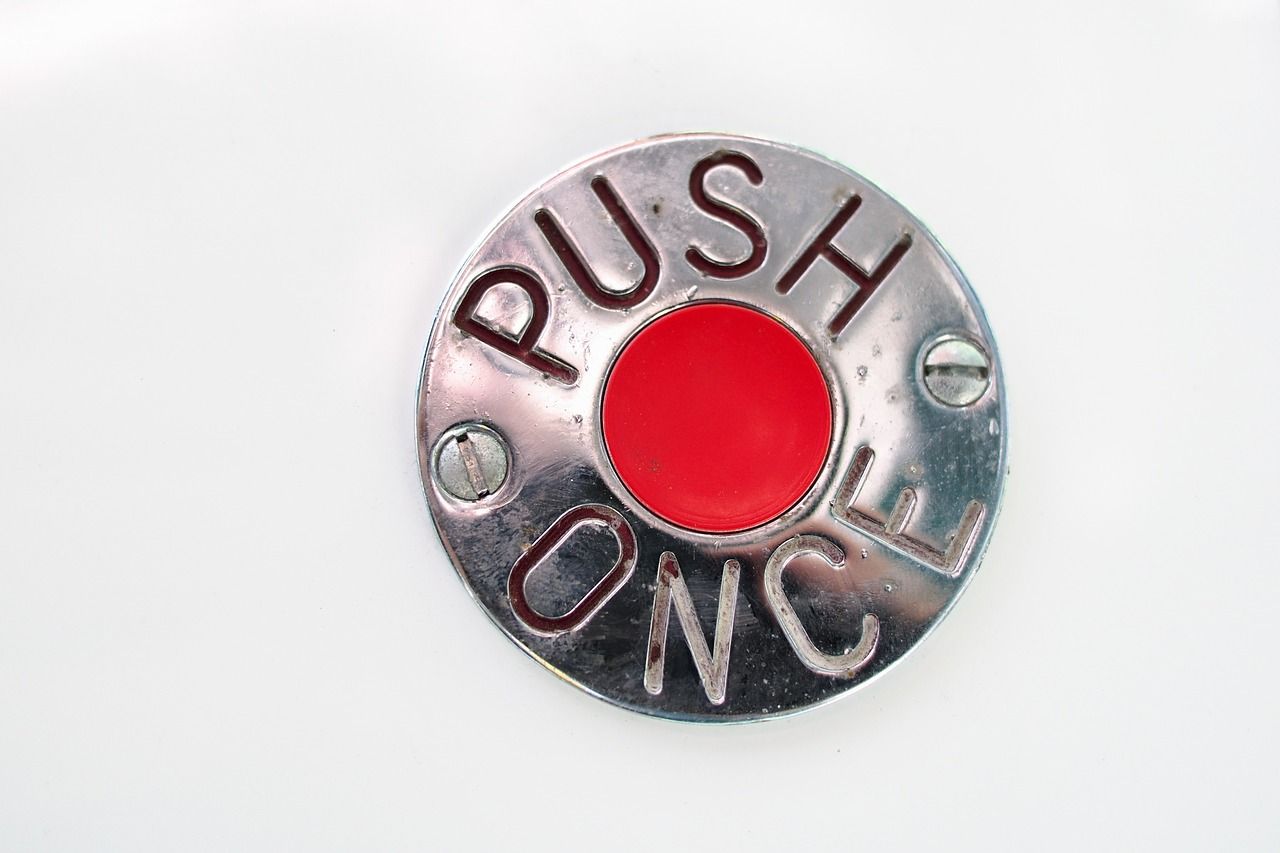Promotion strategies are a set of marketing tools aimed at positioning the offer in the minds of the target group. Thanks to clear guidelines, they allow you to develop a "game plan" and fight the chaos in defining activities leading to the implementation of a specific business goal. There are two types of promotion strategies - push and pull, which are opposed to each other only in theory. The key to success is skillful balancing between them.
What will you learn from the article?
In the era of constantly developing technology and changing consumer trends, an effective promotion strategy can determine the success of any company. Have you ever wondered what exactly the concept of promotion strategy means, what is the purpose of its implementation, and how it can be effectively planned and implemented in your business? In this article, we will guide you through key aspects that will help you understand how to effectively promote your company, what tools to use and answer the question why a properly selected promotional strategy is so important for your business.
While many companies are still struggling to choose the right promotion strategy, we will try to shed light on the differences between push and pull strategies and advise which one may be the best choice for your business. Regardless of whether your current promotion strategy is not bringing the expected results, or you are just planning to develop your promotional activities from scratch, this text will provide you with the information you need to effectively increase the visibility and position of your company on the market.
Contents:
Effective promotion is not a coincidence. Its aim is to properly communicate to the target group the value, capabilities and features of a given brand. A well-designed one allows you to achieve specific profits, as well as build a group of loyal customers and people like company ambassador.
The practical application of the promotion strategy resembles a judo duel. A series of skillfully applied thrusts and strokes can throw the opponent off balance and force him to take certain actions. And in both judo and marketing, the old rule works: Those who quit easily never win, and those who win never quit.

What are promotion strategies?
With the help of appropriately selected promotional tools as well as stylistic and visual means, we are able to create the right one in our minds corporate image and create needs that the brand is able to satisfy.
The basic promotion strategies include:
- advertising, i.e. a paid form of promoting the offer in the mass media or own media (website and social media).
- personal sale, i.e. direct presentation of the offer to the client
- consumer and commercial promotion, i.e. activities encouraging to take advantage of the offer at a specific time, addressed to customers or sales agents.
– public relationsthat is, communicating with the environment in order to attract attention and arouse interest in a company or brand.
Since in skillful marketing, the equation 1 + 1 often scores higher than 2, it is advisable to mix the above strategies to make the most of them.
A promotion strategy document is defined as a formal action plan that contains goals, directions of activities and methods of implementing a specific project or organization. Strategy is a strategic management tool that is used to achieve the intended results and planned development. Developing a promotion strategy involves planning and creating a comprehensive action plan to effectively promote a brand, product or service. This process includes market analysis, identification of target groups, setting promotional goals and selecting appropriate tools and communication channels.

What are the goals of the promotion strategy?
The objectives of the promotion strategy may vary depending on the specific needs and goals of the company, but usually it is about:
- Increasing brand awareness: The goal may be to increase brand recognition and awareness of the company, its products or services among potential customers.
- Generating Sales: A promotion strategy can aim to increase sales and generate more transactions. Through promotions, special offers or marketing activities, you can effectively encourage customers to buy.
- Building reputation and trust: The goal may be to build the company's reputation as a credible and trusted business partner. Through effective communication of the company's values, product or service quality, you can build customer trust.
- Reaching new target groups: The promotion strategy can be aimed at reaching new target groups or market segments that were previously unavailable or underutilized.
- Building customer loyalty: The goal may be to retain existing customers and build their brand loyalty. Through loyalty programs, personalization of communication or dedicated offers, you can build bonds and long-term relationships with customers.
- Market education: The goal of a promotion strategy can be to educate the market about products, services or new technologies. By providing valuable information and educational materials, the company can build knowledge and interest of potential customers.
- Konkurencyjność i różnicowanie: strategia promocji może być skierowana na budowanie przewagi konkurencyjnej poprzez wyraźne wyróżnienie się na rynku. Celem może być stworzenie unikalnego wizerunku marki i pozycjonowanie jako lidera w swojej branży.
How to create a promotion strategy?
Developing an effective promotion strategy requires many analyzes and making many decisions based on them. First of all, you should carefully analyze and research the market, competition, and customer needs and problems. Then set the goals that we want to achieve through promotional activities and what financial resources we are able to allocate to investing in specific promotion tools. The next step is to choose the right tools and media, as well as to determine the style, nature and form of the message that we intend to send out to the world. The final step is to evaluate the effectiveness of the promotional campaign.
An appropriate promotion strategy will help to determine the answers to the basic questions: For whom? What? How? For what money? In order to more precisely answer the question "to whom?", We can create the so-called a persona, i.e. an imaginary image of an ideal client. Thanks to this, we will know who he is, what he likes, what his problem is, how he lives, what the person whose attention, time and interest we want to gain is looking for. This knowledge will help us choose the appropriate communication style and arguments to persuade a potential customer to take advantage of the offer.

the strategy should be based on the knowledge and experience of the designer as well as on the specificity of the market, product and recipients. Observation of the market and competition will allow us to spot the gaps that should be filled with an appropriate offer or one of the forms of promotion.
The key to success is also designing coherent communication based on brand distinguishing features, which will allow us to distinguish ourselves from the competition and ensure synergy of all promotional activities. A unique brand is more resistant to external factors, changes taking place on the market and the actions of rivals.
Jednym z wyróżników marki jest spójna identyfikacja wizualna, która powinna być eksponowana w każdym punkcie styku marki z odbiorcą: stronie www, opakowaniu, social media, reklamy w TV, prasie i radio, wystawie sklepowej itp. Wizerunek marki połączony z unikalnym językiem, dopasowanym do preferencji, jakie ma target group, will help to fully expose her personality, and only a strong personality is a guarantee of the brand's vitality.
Are there any differences between push and pull strategies?
Promotion strategies can be divided into push and pull. The adoption of one of these two concepts is associated with the selection of specific tools and instruments for influencing the market.
Strategy push it consists in focusing promotional activities directly on the customer or other representatives of the distribution chain. It involves "pushing" the message towards the recipient, using instruments such as personal sales and commercial and consumer promotions. For this purpose, it uses such SMS messages, leaflets, newsletters that directly encourage people to take advantage of the offer and have an impact on changing the perception of the brand.

The push strategy used by online tools is based on the use of the so-called "Consent marketing." The recipient himself agrees to receive the information, so he is more involved in communicating with the brand. This strategy will work especially in companies that do not have an established reputation yet, and the consumer awareness of its activities is rather low.
Strategia pull sprawia, że klienci sami zaczynają aktywnie poszukiwać informacji na temat marki. Zakłada „przyciągnięcie” uwagi odbiorcy, za pomocą takich narzędzi jak aktywność w mediach społecznościowych i szeroko pojęty content marketing. Strategia pull ma na celu zaintrygowanie i wzbudzenie zainteresowania daną marką lub produktem. Dąży do nawiązania długofalowej, emocjonalnej relacji z klientem. Jest efektywna szczególnie w przypadku już rozpoznawalnych firm.
Which promotion strategy to implement?
In practice, push and pull strategies overlap. With the help of push tools, we try to create a specific need, and then, thanks to the pull tools, we present our brand as the best solution to satisfy this need. The approach that uses the synergy effect of both solutions allows you to achieve your goals faster and more effectively. Let's go back to the comparison of promotion strategies with martial arts. To succeed, follow the example of Bruce Lee - assimilate what is useful, discard what is superfluous, and constantly surprise your opponent.
Your company's promotion strategy is not working?
We will create one that will be!
Popular promotion strategies
Promotion can take place in many different ways. The problem, however, is choosing the right strategy for a given brand. Much depends on the target group, company profile and budget. Even if we decide on a promotion which, according to statistical data, brings the greatest benefits, it may turn out that we have wasted time and money, because it does not match the profile of the activity. Before choosing the appropriate method, it is worth creating a strategy framework. In this way, we will act in a certain order, avoiding chaos. How to do it? The first step is to select those elements that we plan to focus on. Then we determine the order in terms of importance. It makes no sense to take too much on yourself and try to act in several directions at the same time. It will only create confusion, which is probably too much in your business anyway.
Having basic knowledge of how to prepare a promotion strategy, you need to consider choosing a specific method. Personal selling is very popular. It should not be associated with going door to door and offering services or products. Modern personal selling is based on organizing events during which we present the offer. Thanks to this, we have the opportunity to personally propose and present what we want to sell to customers.
A slightly more traditional, although still very popular, method is promotion through printed advertisements, leaflets or billboards. Theoretically, today it is better to transfer some of these activities to the Internet, but an interesting brochure or radio advertisement can still improve the brand's image and attract new customers. It is also important to remember that not everyone wants to use the Internet, so this is a good method for companies that target older people who avoid digitalization.
It is also worth mentioning e-mail marketing. This is a strategy that can be implemented on a relatively small budget while still benefiting from quick delivery. E-mail marketing gives you the opportunity to effectively measure results, we have control over when and how many messages were sent and which were opened. When promoting a company, we must not forget about its image. Public relations is a great strategy for building brand awareness and positive relationships with customers.

When you think about promotion strategies, you can't forget about the web. The Internet offers a lot of new possibilities, which may be the only area of activity, but they will be a great complement to the aforementioned methods.
Promotion strategies and their tools
As Henderson Stuart once said: running a business without advertising is like winking at a girl in the dark. Nobody but us knows what we're doing. It cannot be denied that without proper promotion, the company will die in the crowd of competitors' offers that invest in this promotion. Fortunately, small and medium-sized businesses have a choice. Promotion strategies can be divided into the more expensive (billboards, radio, television) and those requiring lower financial outlays (mainly the Internet). The web is a great way to stand out in the market without investing your entire budget in promoting your brand. The entrepreneur has a lot of tools at his disposal with which he will effectively present his offer and find new customers.
Running an expert blog is a cheap and, at the same time, a very effective way to promote. Sharing knowledge "for free" with customers is very well received. Starting a blog costs nothing as long as we use a free content management system (eg Wordpress). The only fees you have to pay are the cost of hosting - we won't spend more than PLN 40 a month on a simple blog. If we create the content ourselves, this is where the costs end and the possibilities begin. A blog is a great tool for building a brand image, and if we have a bit more motivation and self-denial, we can extend it with additional content, e.g. invitations to webinars.
A social media profile is another simple and cheap way to promote yourself. Social media, in capable hands, can be a powerful marketing tool that gives us the opportunity to constantly contact and interact with our customers.
Sometimes it is worth combining activities on a company profile with a private profile. Of course, it's not about posting holiday photos, but we're not talking about purely marketing content either. People who will look at our private profile want to be inspired, so let them be posts related to the company, but not encouraging them to make purchases.

Paid ads can eat up a huge budget, but they don't have to. You can write a whole book about the possibilities of Google Ads or FB ads, which is why for many they are a must-have tool for promotion. The key to success is a properly defined target group. If we define it incorrectly, the conversion will be very low. It is also worth thinking about it from the creative side - an interesting photo and a short, but succinct description, and in the case of Google Ads - good tittle and meta descriptions. Paid ads have the advantage that they can appear on literally any device. We can allocate any budget to campaigns. It can be PLN 100 or PLN 1500.
4 basic rules of promotion
Regardless of which method of promotion we consider to be the best for the company, each of them must be prepared in such a way that it meets specific assumptions. You should analyze:
- Who is the promotion addressed to, i.e. who will be its recipients,
- what do we want to promote: a specific product, or maybe a group of products? Service? Information?
- how we plan to conduct promotional activities, what methods and tools we will use,
- how much we are able to spend on promotion, i.e. define the budget.
Effective implementation of the promotion strategy must meet four basic assumptions. The first is building consumer awareness, as it should never be forgotten that a consumer who does not know about the brand or product will never take advantage of the offer. The second rule of thumb is to foster interest. The recipient who omits our promotional activities most likely does it because of the lack of interest in the offer. In order to be successful, we must create content that will be tailored to the needs and expectations of customers. In this way, we increase their involvement and show that they are the most important recipients.
There is no effective promotion strategy without a call to action, i.e. a call to action. A properly constructed CTA attracts like a magnet and helps the customer make the final purchase decision. It is also worth mentioning that a well-run promotion not only increases consumer awareness, but also generates demand. If we manage it well, we can make customers desire our products.
When implementing any promotional activities - regardless of their duration, budget or scope - we must remember about the so-called a promotional constitution, i.e. permanent elements of promotion: a trademark (brand), a uniform idea of promotion, a slogan and visual identification.

Promotion strategy in your company - why is it so important?
The promotion strategy in the company is extremely important for several reasons:
- Increases brand awareness: The promotion strategy allows you to effectively reach potential customers and increase brand awareness. Through properly planned and targeted promotional activities, you can build brand recognition and stand out on the market.
- Generates Sales: An effective promotion strategy helps convert customer interest into actual purchases. By promoting benefits, special offers or engaging marketing activities, you can encourage customers to take advantage of the products or services offered by the company.
- Builds trust and reputation: When a company effectively communicates its values, uniqueness and quality of products or services offered, it gains the trust of customers. Through transparent and credible promotion, the company builds a positive reputation, which is crucial in long-term business development.
- Stand out from the competition: The promotion strategy allows the company to stand out in the market and attract the attention of customers among the competition. Through creative, innovative and unique promotional activities, a company can build its brand as a leader in a given industry.
- Builds customer loyalty: A company's long-term success depends on its ability to maintain and build customer loyalty. An effective promotion strategy can influence positive customer experience, create emotional bonds and benefits and rewards for regular customers, which translates into their loyalty.
- Optimizes the use of resources: A well-developed promotion strategy allows the company to effectively use available resources such as budget, time and staff. Thanks to proper planning and the use of promotional tools, a company can achieve better results with optimal use of resources.
All these elements testify to the key role of the promotion strategy in the company's success. Developing a coherent and effective promotion strategy allows the company to achieve better results, increase sales, build the brand and build long-term relationships with customers.
Strategia promocji a grupa docelowa
Well planned strategia promocji musi być ściśle powiązana z potrzebami i oczekiwaniami konkretnej grupy docelowej. Bez tej zależności nawet najbardziej kreatywne promotion strategies mogą okazać się nieskuteczne. Kluczem jest dogłębna analiza preferencji, stylu życia i języka komunikacji potencjalnych klientów, ponieważ wówczas strategie promocyjne trafiają bezpośrednio w ich potrzeby. Różne segmenty rynku reagują inaczej na ten sam przekaz – co działa w przypadku młodych dorosłych, może nie zadziałać wśród seniorów. Dlatego dopasowanie treści, kanałów komunikacji oraz formy przekazu staje się fundamentem każdej skutecznej strategii promocyjnej.
Skuteczne strategie promocyjne dla małych firm
Małe firmy często muszą działać w warunkach ograniczonego budżetu, co wymaga kreatywnego podejścia do strategii reklamowej. W takich przypadkach skuteczność gwarantują dobrze przemyślane strategie promocyjne, które opierają się na kanałach niskokosztowych, takich jak social media, marketing szeptany czy współpraca z mikroinfluencerami. Nawet z niewielkimi zasobami można stworzyć efektywną strategię promocyjną, która przyciągnie uwagę odbiorców i zbuduje lojalność wobec marki. Największym atutem mniejszych przedsiębiorstw jest elastyczność i możliwość szybkiego reagowania na zmiany rynkowe – cechy, które można doskonale wykorzystać przy wdrażaniu kolejnych strategii promocji.
Jak mierzyć skuteczność strategii reklamowej?
Ocena efektów, jakie przynoszą wdrożone promotion strategies, jest niezbędna do dalszego doskonalenia działań marketingowych. Firmy powinny już na etapie planowania strategii reklamowej określić konkretne wskaźniki sukcesu – mogą to być zasięg kampanii, konwersja, liczba nowych klientów czy wzrost sprzedaży. Tylko mierzalne cele pozwalają realnie ocenić, czy dana promotional strategy spełniła swoje zadanie. Ważne jest również porównywanie danych z różnych okresów i kampanii, aby dostrzec trendy i wyciągnąć konstruktywne wnioski. Regularna analiza wskaźników skuteczności pomaga szybko zidentyfikować słabe punkty oraz potencjał do rozwoju nowych strategii promocji. W dłuższej perspektywie pozwala to tworzyć coraz bardziej trafione i dopasowane strategie promocyjne, które zwiększają rentowność działań marketingowych.
Marketing promotion strategies – summary
Promotion strategies are a key element of every company's marketing, allowing you to effectively reach customers and arouse their interest in the products or services offered. The aim of the promotion strategy is not only to increase sales, but also to build brand awareness, customer loyalty and stand out from the competition. To create an effective promotion strategy, companies must understand their audience, define marketing goals and choose appropriate communication tools and channels.
The article discusses the differences between push and pull strategies. The push strategy involves "pushing" the product towards customers through intensive marketing activities, while the pull strategy focuses on "attracting" customers to the product by building a strong brand and generating demand. The choice between these two strategies depends on many factors, including product characteristics, company goals, and target customer preferences and behaviors.
The author also emphasizes the importance of having a personalized promotion strategy for each company. A strategy that does not produce the expected results requires rethinking and adjustment. The introduction of changes may include modifying the message, using new promotional tools or changing the direction of communication in other market segments.
Finally, the author emphasizes how important the promotion strategy is in building the company's competitive advantage. An effective strategy can not only increase sales, but also have a positive impact on the overall image of the brand on the market. For every company, it is an investment that takes time, but brings long-term benefits.
Worth knowing:
What is a promotion strategy?
The promotion strategy is a key element of any marketing campaign. These are carefully planned activities that are aimed at drawing the attention of recipients to a product or service. Through the promotion strategy, the company conveys its values, the advantages of the offer and the uniqueness of the brand. It is important that such activities are adapted to the goals, target group and nature of the product itself. Many companies struggle with the problem that they invest in promotion, but this does not translate into increased sales. Here, the strategy plays a key role, it must be tailored to the specific market, well thought out and realistic. Thanks to this, you can increase the interest of potential customers and achieve the intended goals.
Example promotion strategy?
A good promotion strategy can be crucial to the success of a company or product. There are many ways to attract the attention of potential customers and build loyalty with them, and the right promotion strategy is one of the most effective tools in this field. This approach allows companies to reach a wider audience and increase sales. Therefore, in order to monitor how well a given promotion strategy is doing, it is worth using the effectiveness analysis and adjusting your actions based on it. In this way, the company can stay at the forefront of the market, attracting customers and increasing its profits.
What is the product promotion strategy?
The product promotion strategy is a key element in a marketing campaign. It consists in the appropriate transfer of information about the product to the potential customer. The promotion strategy should include various tools such as advertising, direct sales and public relations activities. It is important that the strategy is tailored to the target group and the goals we set for the campaign. A well-thought-out promotion strategy can help increase product sales and build interest among customers.
What are the types of promotion strategies?
Every entrepreneur knows how important it is to implement a promotional strategy. Proper development of a promotion strategy makes a given product or service reach a wider audience, gaining popularity and increasing sales. But what are the most common types of promotion strategies? Here are a few: promoting the product in social media, organizing company events, rewarding loyalty customers with discounts and promotions, or creating interesting high-quality advertising gadgets. Each of these types can contribute to effective brand promotion, but it is also important to match the right approach to the nature of the product and the target group.
Which variants of the promotion strategy are the best?
The choice of the best variants of the promotion strategy depends on many factors. Therefore, it is worth paying attention to the goals you want to achieve, target groups and consumer preferences. In the light of the rapidly changing market and available promotion tools, it is worth investing in online advertising, social media campaigns or content marketing. Interesting solutions are also industry events and sponsorship. However, it is worth remembering that the best promotion strategy is one that is tailored to the needs of the company and its customers.

